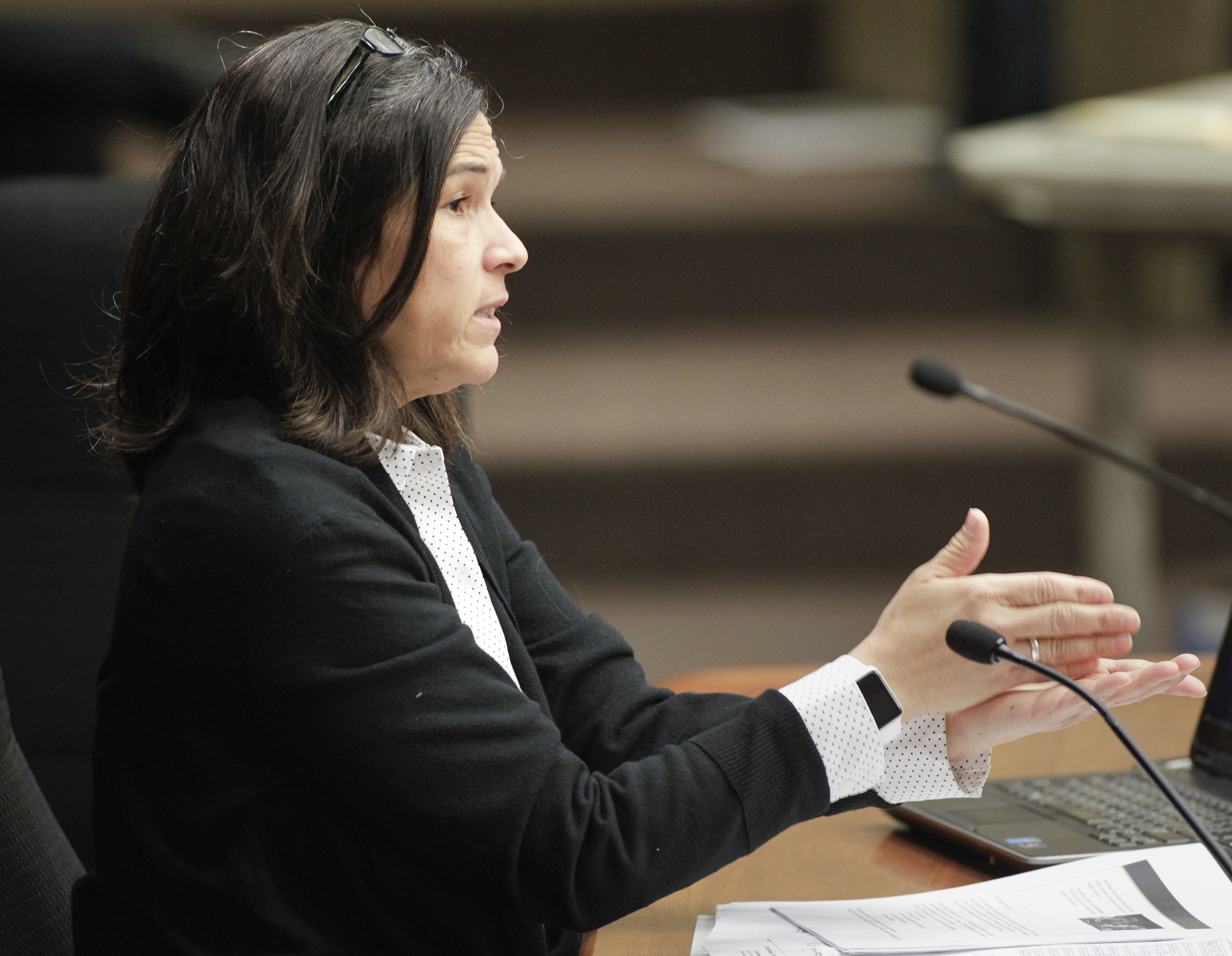Education commissioner says proposed education budget increases offer stability

One day after Gov. Mark Dayton offered his “Opportunity Agenda for a Better Minnesota” budget proposal, legislators turned their attention toward what it might mean for education across the state.
His 2018-19 biennial budget increase of $1.2 billion would add an extra $604 million in E-12 education spending.
“This budget invests in the future of our students,” Education Commissioner Brenda Cassellius told the House Education Finance Committee Wednesday. “This is the budget that teachers, families and students have been waiting for.”
The bulk of the additional dollars would be 2 percent increases in the General Education Basic Formula each fiscal year, totaling nearly $371 million in General Fund spending.
The formula is the backbone on which public school districts stand, providing 63 percent of total E-12 funding in Fiscal Year 2017. Based on how many students are enrolled, it determines the amount of state funding each district is allocated. According to budget documents, “The per-pupil formula would increase by $121, from $6,067 to $6,188 in FY 2018, and by an additional $124 to $6,312 in FY 2019.”
While it can be argued that increasing the formula percentage benefits all students by providing additional resources that can be targeted at closing achievement gaps, some decision-makers expressed concern over the size of the increases.
“It’s a vigorous price tag,” said Rep. Jenifer Loon (R-Eden Prairie), who chairs the committee. “We have to look at the results for our money.”
Because operating costs and other expenses increase annually due to inflation and other factors, the formula needs to be adjusted accordingly. Steady increases over the past four years created a 2.4 percent increase over inflation, but it still hasn’t been enough to offset the lag created by the 10.6 percent total decrease from Fiscal Years 2003-13.
“The first couple of years we were really just digging out of a hole,” Cassellius said.
Others questioned whether concrete data was available to link increased spending to diminished achievement gaps.
“I think we may need another pathway,” Rep. Sondra Erickson (R-Princeton) said. “We have a conundrum in how we look at education.”
Pre-K payday
The new voluntary pre-K pilot program that serves nearly 10,000 young learners would also get a $74.8 million funding boost while structural changes would also be made.
The program is currently capped due to the amount of state funding provided, but would be capped by the number of students enrolled.
“We know there are 6,800 students waiting for spots in pre-K. We don’t want to keep them waiting any longer,” Cassellius said.
According to the recommendation, a limit on participants would be a more transparent way to fund voluntary pre-K as opposed to revenue-generated caps which result in a smaller percentage of children being served in areas with the highest concentration of children living in poverty.
“Every year, with no exceptions or excuses, Dayton has put our families first. This budget takes us another step forward, but our work is not yet done,” Cassellius said.
However, its price tag and purpose was again a point of concern.
“We’re replicating what we already do through other agencies,” Rep. Tama Theis (R-St. Cloud) said.
Also in the budget
Other gubernatorial increases for the 2018-19 biennium, include:
- $67 million increase to aid the Teacher’s Retirement Association and St. Paul Teacher’s retirement fund;
- $40 million more in special education spending;
- $12.2 million for the School Readiness program to prepare children to enter kindergarten;
- $10.4 million to maintain services and assistance provided to children, students, teachers, parents and schools;
- $5.2 million to the Preschool Special Education program, which provides individualized education services to pre-K children with disabilities; and
- $4.4 million to expand the Support Our Students Grant program and offer another round of the six-year grant programs to schools to help hire additional student support personnel.
A lot of learning
There are an estimated 845,527 pre-K through grade 12 students across the state’s 332 school districts and 157 charter schools, with more than 118,000 children participating in early learning programs, and more than 60,000 adult learners. Minnesota has 55,277 full-time equivalent licensed teachers.
Related Articles
Search Session Daily
Advanced Search OptionsPriority Dailies
Ways and Means Committee OKs proposed $512 million supplemental budget on party-line vote
By Mike Cook Meeting more needs or fiscal irresponsibility is one way to sum up the differences among the two parties on a supplemental spending package a year after a $72 billion state budg...
Meeting more needs or fiscal irresponsibility is one way to sum up the differences among the two parties on a supplemental spending package a year after a $72 billion state budg...
Minnesota’s projected budget surplus balloons to $3.7 billion, but fiscal pressure still looms
By Rob Hubbard Just as Minnesota has experienced a warmer winter than usual, so has the state’s budget outlook warmed over the past few months.
On Thursday, Minnesota Management and Budget...
Just as Minnesota has experienced a warmer winter than usual, so has the state’s budget outlook warmed over the past few months.
On Thursday, Minnesota Management and Budget...